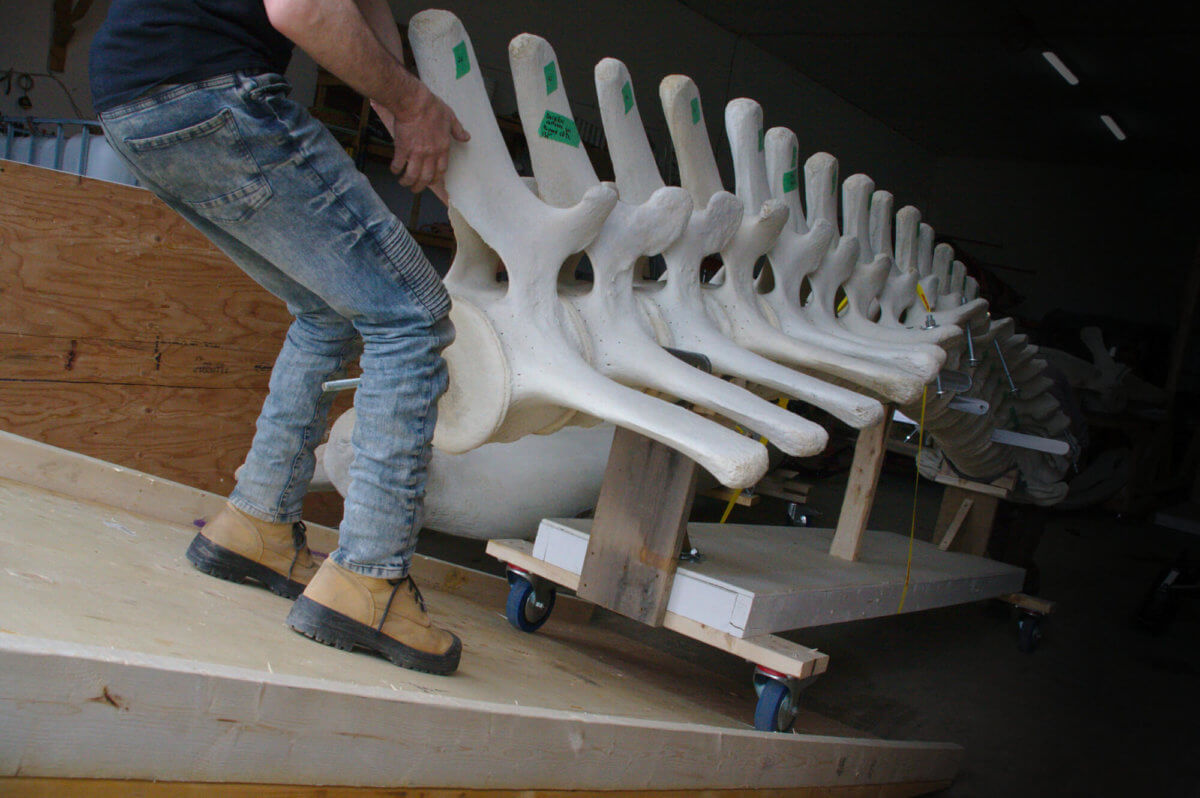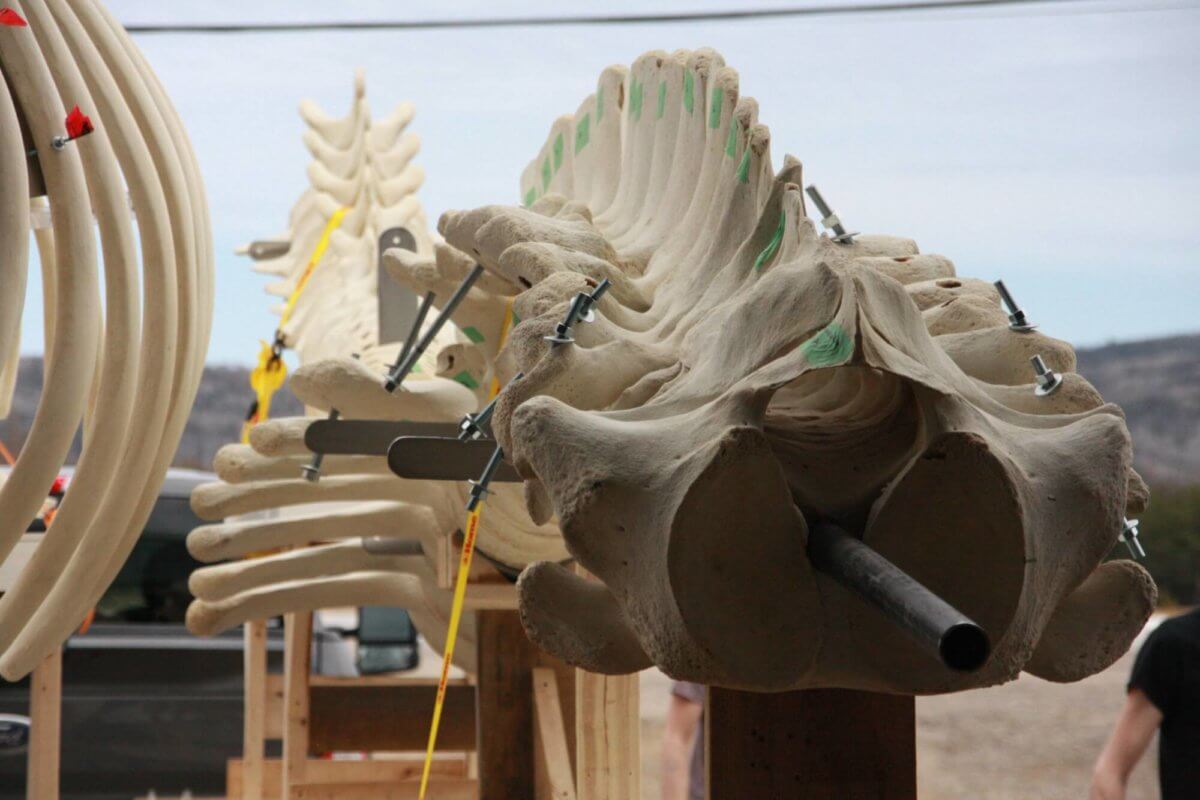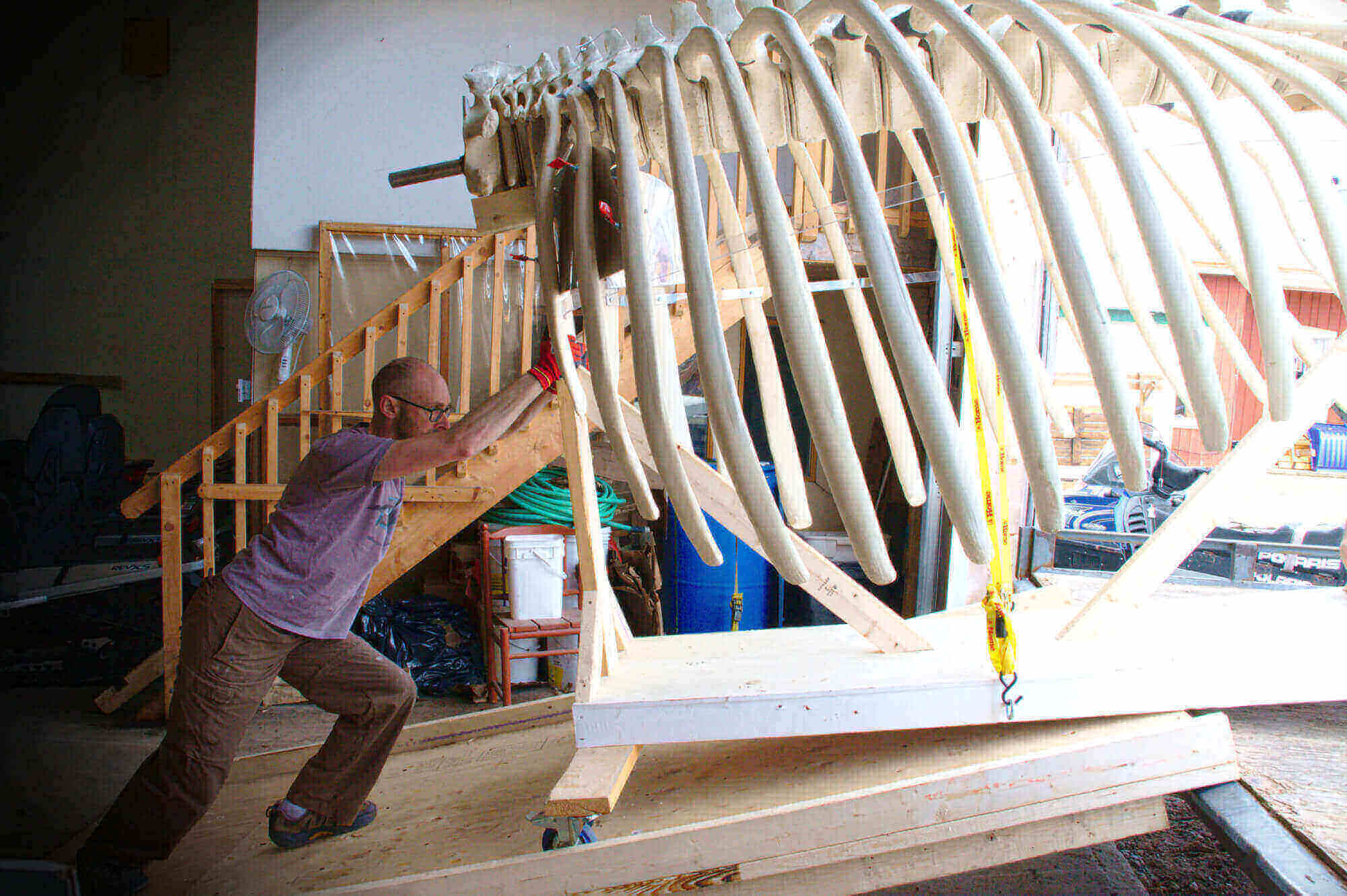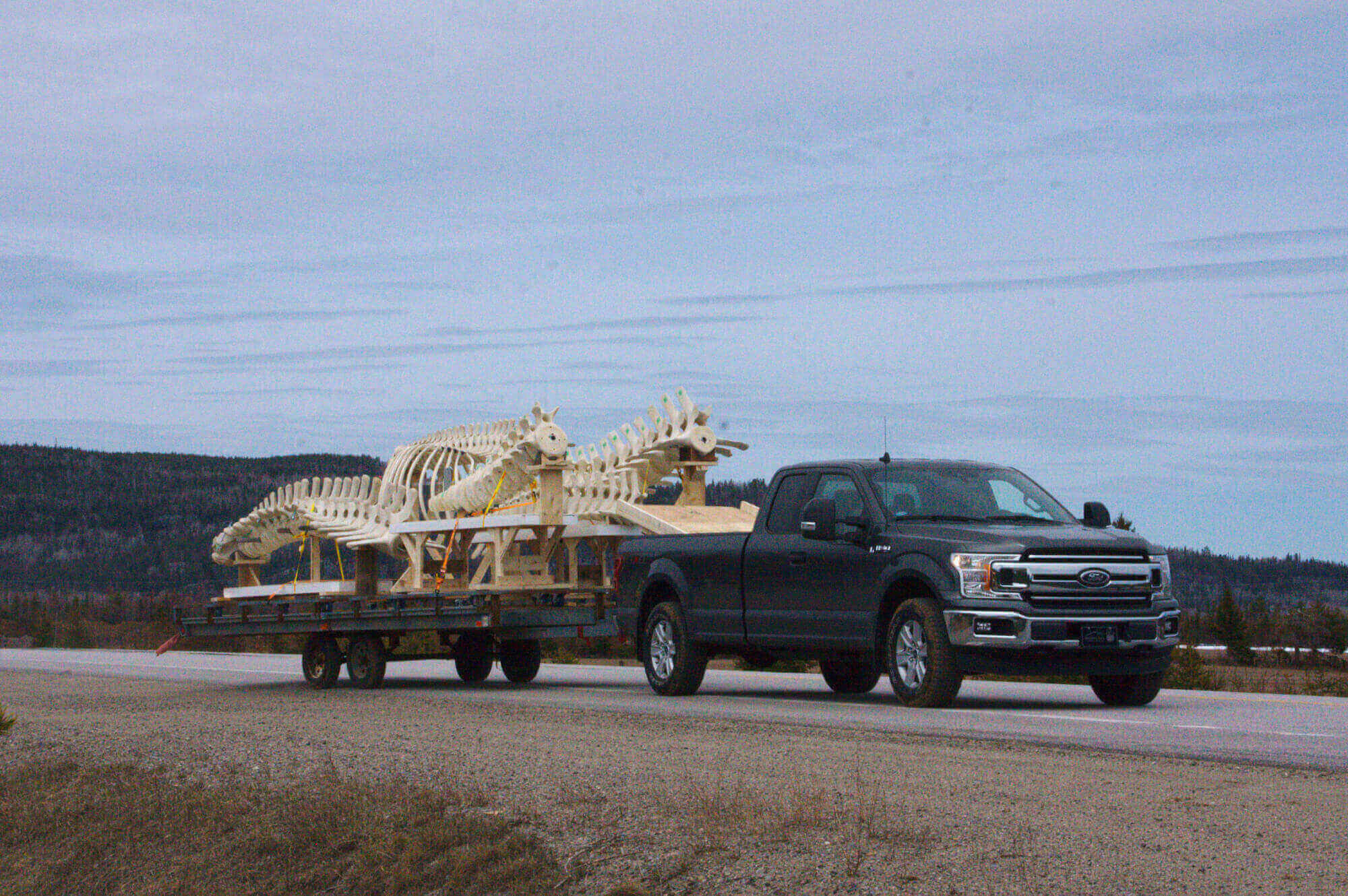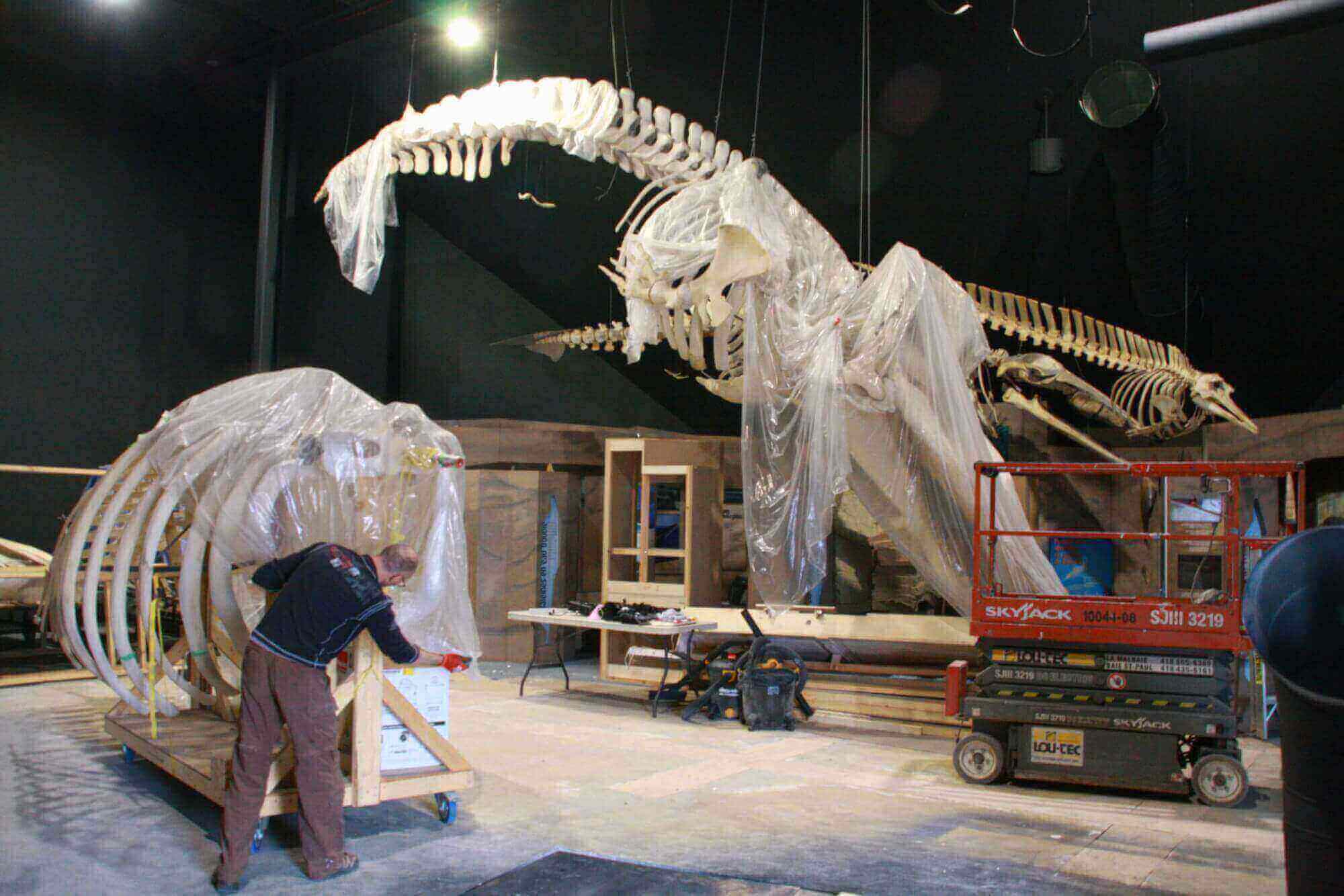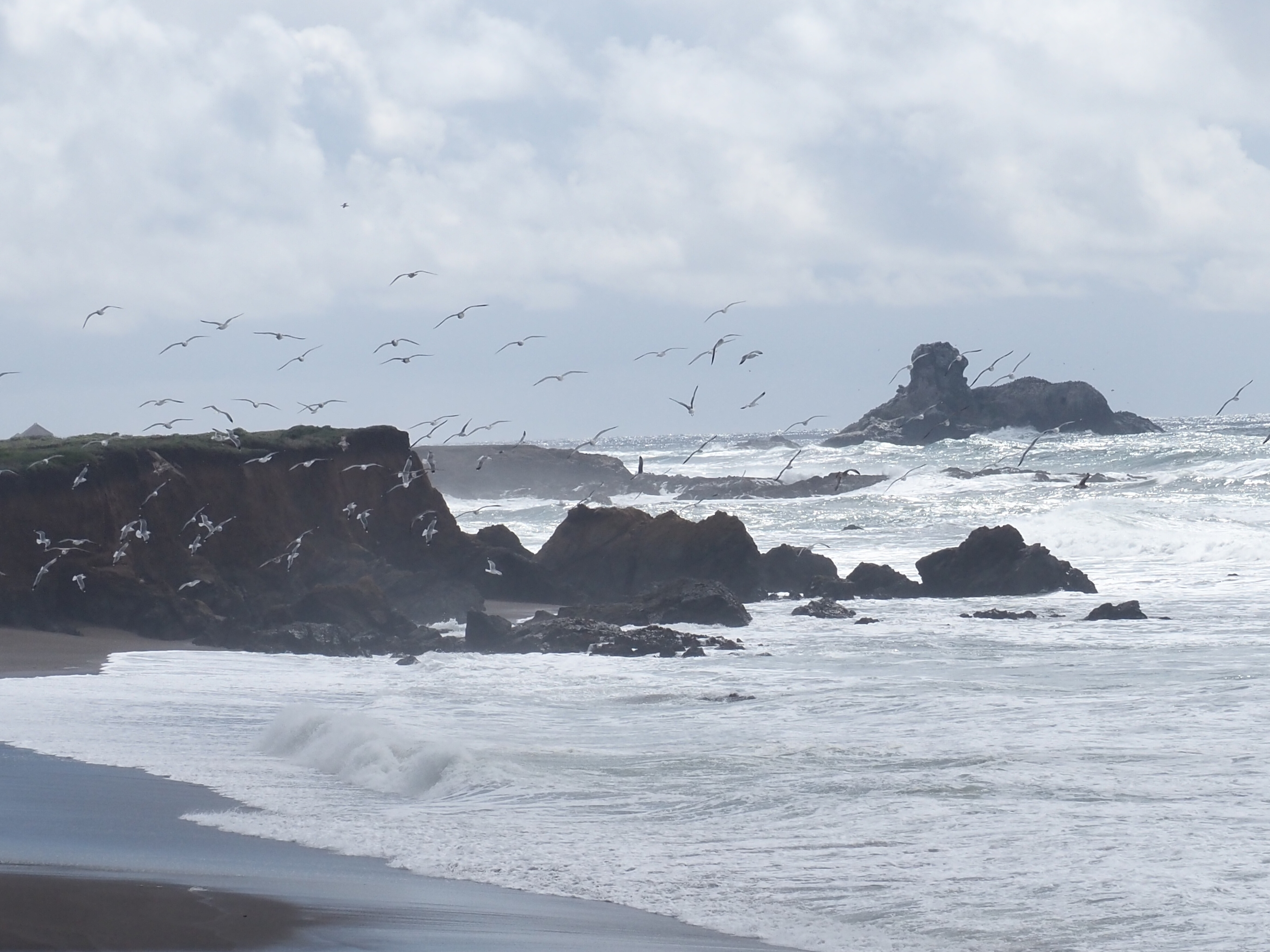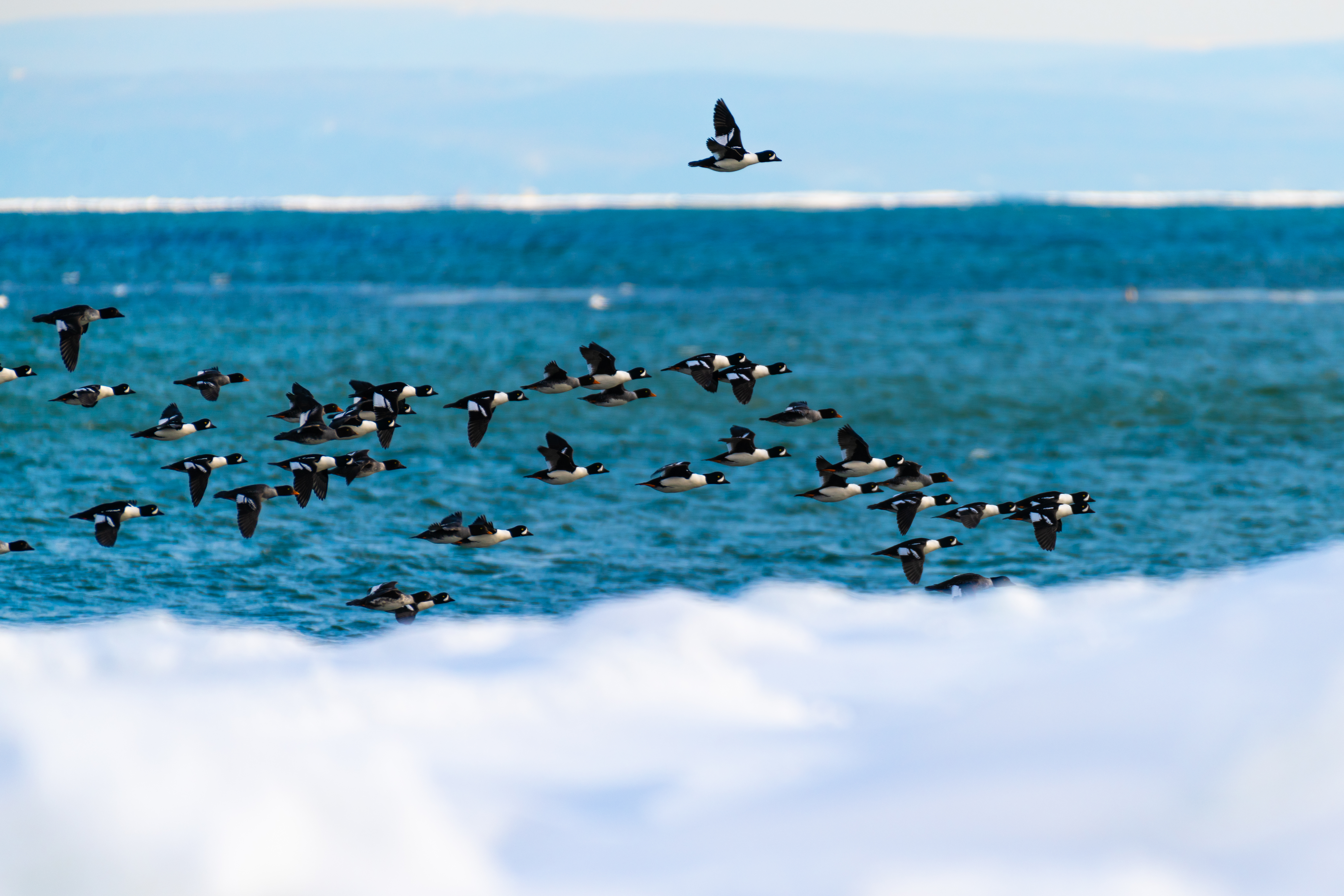Friday, May 15, 9:30 a.m. Fully dressed and knapsack ready to go, I can hardly wait to kick off this special day. Today I will witness the removal of three gigantic skeletons.
A fin whale, a small humpback whale and an imposing North Atlantic right whale will board a trailer and travel 12 km to the Marine Mammal Interpretation Centre (CIMM) in Tadoussac. They will be added to Canada’s largest collection of cetacean skeletons on display. The show is bound to be fascinating!
Moving giants
But you don’t move a whale like you move a chest freezer. Patrick Bérubé, one of the “skeleton assemblers,” warned me: “First we must go and collect the tow vehicle, then the trailer, the straps and the equipment we’ll need to build a ramp.”
The hangar is located at the Domaine de nos ancêtres , belonging to “Ferme 5 Étoiles” in Sacré-Cœur, along Route 172. It’s a large, ordinary-looking building; however, once the automated curtain goes up, the inside is anything but standard.
Kayaks and snowmobiles are parked next to giant rib cages and vertebrae the size of soccer balls. Pectoral fins as tall as you and me lean against the wall, while a humpback skull grinning a row of baleen sits atop a table.
It is here that, for almost two years, professional handyman Patrick Bérubé and GREMM senior naturalist Michel Martin patiently cleaned and assembled ribs, vertebrae and metatarsals. Painstaking work, the progress of which we documented in our field notes in January 2019 and January 2020.
Firmly attached
The assembly work will be completed directly at the Interpretation Centre. To facilitate transport and handling, the particularly imposing skeleton of Piper, a right whale, has been divided into four parts, each firmly attached to a rolling platform. Because even after they have been stripped of their flesh and blubber, whales are still pretty weighty. About 1,500 kg, in fact, for the complete skeleton of the fin whale!
While I stop to contemplate the curves of what was once the back of a humpback whale, Michel and Patrick get to work. Using a saw, nails and screws, they make a large makeshift ramp sturdy enough to support the weight of the skeletons.
Orchestrating the comings and goings of the various carts, the two companions push some of the larger pieces onto the trailer. With the space quickly filled up by the enormous bones, it will take two more trips to bring back the skeletons in their entirety.
Then comes the tricky part: safely securing everything! “Our biggest fear is if something should get lost or fall onto the road!” confides Michel Martin.
It is 2 in the afternoon when the curious-looking convoy finally pulls out onto the paved highway. The white ghosts wobbling along behind the pickup cause a few cars to slow down or passers-by to stop and stare. But everything arrives safe and sound at the entrance to the Interpretation Centre on the banks of the Saguenay.
Welcome to the Interpretation Center!
One by one, the pieces enter the CIMM’s future showroom, which is still under construction. They join the many other skeletons already present: sperm whale, minke whale, beaked whale, porpoise, beluga, etc.
“Our work is far from over,” Patrick reminds me. We still have to hang and securely fasten them, finish the assembly, and screw the ribs of the right whale in one by one, which we had to remove to get them through the doors.”
Piper the North Atlantic right whale is also handled with special care. In order to be able to attach its long, heavy baleen (weighing approx. 270 kg) to its jaw, CIMM sought the expertise of taxidermists from Bilodeau Canada, based in Normandin (Lac-Saint-Jean region). They designed an aluminum and Teflon support, final testing of which is currently being carried out in their workshops.
A second life
The skeletons should be ready to welcome visitors to CIMM by around mid-July. But after so many months spent together, won’t Patrick and Michel miss these silent giants? “It’s going to be weird, that’s for sure,” smiles Michel Martin, who immediately puts his naturalist cap back on and remarks “But we cleaned them, we put them together… now we’re going to talk about them!”



